TPG Week 43: Entering A Contest
Hello, everyone! Welcome back to The Proving Grounds. We have another new Brave One in Thaddeus Howze, who brings us a script excerpt from the recent MTV contest to create a comic based on a Stan Lee idea.
Let’s see how he does, shall we?
THE SEEKERS – Page One (5 Panels)
Panel One:
Exterior: wide angle shot showing famed entering Vegas sign, aerial shot, slightly out of focus in the distance are the lights and the long road into Vegas. (Right away, we have some problems. The first problem is that there is no light source. We don’t know if this is day or night, but because of the mention of lights in the distance, we can assume night. However, Vegas is extremely brightly lit. There are a LOT of lights from hotels, casinos, restaurants, clubs…none of which are mentioned. Just lights and the long road. So, what’s the light source? If you give the time of day when you’re establishing the setting, then you won’t have to worry about it. Second, why put the background out of focus? There’s no real reason I can see for that. This isn’t someone’s point of view, and it doesn’t really add anything to the story. If you want the sign to be the center of attraction to draw the eye, then I suggest just having that and some background in the panel. More than likely I’d put it from something like a worm’s eye view, looking up, or looking slightly up at it.)
CAPTION: Las Vegas, a near-religious nexus of the Nevada desert, a modern Mecca. (This sounds like an internal monologue. I wonder if we’re going to get a case of the dropsies.)
Panel Two:
Exterior Pan high and wide: Grand Palace Hotel. Put a gaudy logo on the top of the building, and we are focused on that as we pull away. Glitzy, beautiful, well-lit. Show it from the top of the hotel. (Failure. Right here. This is a moving panel, because you cannot pan in a still image. You cannot pull away in a still image. If I were a contest judge, I’d throw this out right here, because you’ve just shown me you don’t know how to write for the medium. And it’s only the second panel. The only possible saving grace is that the judges may not know what they’re looking at. But if they do/did, then this is in the trash.)
CAPTION: Millions come to worship and lose all that they own on a throw of the dice. (cliché much?)
Panel Three:
External overview shot, Wide angle, showing a wide array of police cars policemen hunkered behind their doors, guns drawn. (I have little idea as to where this is taking place. Why? Because you haven’t done a good job of establishing where we are. In three panels, we’ve gone from a sign, to another sign—this time, on a building—to some police cars. You don’t mention the building being seen in this panel, so the police could be anywhere in town. And what is an array of police cars? How many are we talking? Specifics help, even if they’re a little vague. Saying three to four is more specific than saying an array. Next, because this is going to a contest—basically, going to an editor cold, then you want to make sure that all of your i’s are dotted and t’s are crossed. That means spelling, punctuation, and capitalization. You have a single sentence, and it’s a run-on. If the judges got to panel three, they then just chucked this in the garbage, because they don’t have the time to try to parse out what it truly is you intend to say. Your entry has to be perfect and pristine in every detail. Make them hunt for a reason to not move you to the next round! Don’t hand it to them on a silver platter instead.)
CAPTION: Been a detective on the LVPD for ten years. The name’s Eckhard. (Good! We’ve got a name. And because he’s a detective, I’m not going to ask the who’s he talking to question. Part of the convention for detective books. However, I’m hoping there’s a mystery here. Superheroes and mysteries can work, but if he’s just there to investigate without a real mystery being present, then this approach is a waste, unless it was specified in the rules.)
Panel Four:
Pull back the view and Switch to an unmarked car stopped in front of the Hotel, past the police cordons lights flashing from the grill. It’s his voice that will be our eye on the ground and we will follow this section story in Vegas through his eyes. Show it from a driver’s side view with his face in profile and him viewing the broken door from behind it. (I hate run-on sentences. They make me want to stab my brain with a hot waffle iron. Now, to the real questions: could we see his car before? I’m talking about in the previous panel. If not, then this car is magically delicious. How do you fix that? There are two ways: either make sure the car is part of the array , or add a panel showing the car pulling up. Basically, you have too big of a jump in Border Time. Next, where did this broken door come from? What broken door? Where is this broken door? Is the door broken in, or broken out? These are important details for the artist.)
TOP CAPTION: Never had much use for religion. Seems people are looking for something they can’t have. (This dialogue is padding. And it comes at an awkward place. He’s talking about religion, then gives his name, then says he never had a use for what he was just talking about. Seems to be protesting too much. I’d cut the first sentence, and move the dialogue in this panel up to the previous one. Move the dialogue in the previous panel down to this one. This way, he names himself while also showing himself.)
BOTTOM CAPTION: But few come to Las Vegas to find anything.
Panel Five:
Show Freya from the back walking floating into the center of the hotel lobby, past the ruins of a revolving door. People close to her are fleeing in every direction, people further back in the casino are just looking up. Two hotel security guards lie unconscious behind her and two more are drawing their guns. Electricity discharges from every metallic surface around her. Lightning crackles from her hands and her hair is waving with electrical charge. (Is she walking or is she floating? The problem with floating is that she could appear to be standing still, depending on the angle this is drawn from. Walking would be much better. But, you say she’s walking floating. I don’t know what that means. It is extremely unclear. At least we now know what kind of door it was that was damaged. Now, I know where the unconscious guards are, but where are the conscious ones? Are they also behind her? Are they both to one side, or are they at either side of her? Now, what are these metallic surfaces that are discharging electricity? This panel description is poor.)
CAPTION: At least, not until today. Looks like she brought her own religion, too. (Break this up into two captions. It will read better.)
The Seekers Logo
Written by: Thaddeus Howze, Created by: Stan Lee
THE SEEKERS – Page Two (8 Panels)
Change scene: Norden rushing back to the dig site desperately seeking evidence.
Panel One:Interior of a car, light from the dash illuminating Norden’s face, glowering, inset the dash speedometer at 95 mph. (No. Yannick? Why am I saying this?)
CAPTION: “You made bail, Norden. Don’t leave town.”
NORDEN: Did they really expect me to stay there after the most important discovery of the century? (Melodramatic much? This line is very much in the realm of not good. See, here’s the thing: he’s talking to himself. Now, if this is the start of the trip, I could get behind it. But because of the fact he has the memory of someone telling him he’s made bail, you give the feeling that this is later in the trip. This is something I could forsee being said near the start, not near the middle or the end.)
Panel 2:External shot: Crashes past a police barrier and stops at the edge of a crater. (Connor. Why does this fail as a panel description?)
NORDEN: There should still be a ladder near the center of the site, I can get back in from there. (Have you ever heard the term butler and maid ? It’s a convention where two people are talking, telling each other what they both already know, for the sake of the reader or the audience. You have no maid, since I’m assuming he’d be the butler, so I’m not sure why he’d be telling himself things he’d already know. Now, if he were already there and couldn’t find it, THEN there’d be reason for him to say certain things out loud. There is no reason for him to say this here.)
Panel 3:Looking down the ladder over Norden’s shoulder. He is using a construction worker’s cap for light. There should be small red lights deep in the cavern at regular intervals. Red light makes it possible to see without losing night vision.(This will be cleared up as long as Connor does what I think he will.)
Panel 4:When he reaches the bottom he should turn to the right and see a pile of crushed rock blocking the path. (Okay, how is this a panel description? You’re telling me something that SHOULD happen as long as something else happens first. What if I say he doesn’t make it to the bottom? What if I say he stops midway? What happens, then? How will you gainsay me? He could do a LOT of things before reaching the bottom. He could go back to the car and get his stuffed elephant and security blanket to keep him safe. He could call the National Guard. He could fly like and eagle to the sea. I could do this all day long.)
NORDEN: Damn.
Panel 5:Flashback scene; only reds and blacks, viewed from the front, Norden pushing someone forward, and someone behind him being crushed by rocks. The push should be a dramatic diving, and the person saved should have been male. The person lost, a female.(Okay. I’m in a white void. I don’t know where this flashback is taking place. I also cannot see what it is you’re talking about. Dramatic diving? Who’s diving dramatically? And a dive is not a push. And what’s up with this should have been ? In this sense, do you know what should have been means? It means the artist made a mistake, and drew a woman instead of a man. Why are you calling the artist a screw-up before they even had the chance to start? And what are these people wearing as they wander around this white void with falling rocks? What age range are the guy and gal? Gotta give the artist something, Thaddeus.)
SFX: Crashing rocks. (This is not a sound effect. This is lazy writing.)
Panel 6:Norden turns left and sees small green lights in the distance bunched together. A fissure leads deeper into an underground chamber. He clambers down the wall.(This is another moving panel. People cannot do two actions at once in a script. And are we out of the flashback now? I don’t know. You don’t say. And if there’s some green lights in the distance, and if I assume that he’s underground at night…where is all of this light coming from?)
NORDEN: Was this fissure caused during the cave in? (Come at this sideways. Find a different way of saying it. If you come at it straight on like this, people are going to feel like you hit them over the head with a sledgehammer at the most, or at the very least, slapped them in the face. Hard.)
Panel 7: Norden steps on something and gets a cut on his leg. When he reaches the bottom of the fissure, fifteen feet down, using rough rock face, he jumps down and stumbles on something. (Thaddeus. This is not a screenplay. This is not a movie. Panels can only do ONE thing at a time. Here, you have him doing four: he steps and gets cut is one, he climbs down, which is two, he jumps, which is three, and then he lands and stumbles on something which is four. Four panels. The 15 feet? Doesn’t matter. No one cares. And what is the something he stumbles on? The artist is going to need it in order to draw it.)
NORDEN: Ow! What the hell? (Cut the last sentence. Just have the expression of pain. Why? Because he’s fooling around in the dark. He should expect to stumble on things.)
Panel 8:He sees a small metallic spider-like shape, covered in debris and caked on mud and rock. It is about the size of a large loaf of bread with four long, sturdy legs. Two extra legs dangle broken. It has sigils of an alien language, nothing seen on Earth. (Impossible, for a few reasons. First, there is no light source. Second, if it is covered in debris and caked on mud and rock, then you will not be able to see it is metallic. Third, if it is covered in stuff, you won’t be able to see any writings on it. Know what can be drawn.)
NORDEN:Hello Nobel Prize.
THE SEEKERS – Page Three (6 Panels) (Page break.)
Three long panels showing, studio space in background, include microphones, stage chairs. Think The View’s stage. Wide angle shot, allowing for first two balloons to share the first window.
CAPTION: 12 hours ago (Where is this supposed to go? I’m taking the above to NOT be a panel description. That means this caption doesn’t belong here. This means you’re not watching your format as closely as you should. I am not going to ding you on the lack of punctuation here. Since it is only giving a time, the lack of punctuation could be a stylistic choice rather than a mistake. You don’t necessarily need to have punctuation here, so I’m going to give the benefit of the doubt.)
Panel One:Jennifer is sitting on her soundstage looking angry, her boss is holding a clipboard and looks stressed. Balding, middle age producer. (Where is she on the stage? I take it in one of the chairs, but is she to the left, right, or middle? Don’t forget, you have to lead the reader’s eye.)
HART: Look Donny, he sounded so sure this time. It’s not like we have run anything on him in a couple of years. (Comma-fail. And I have no idea who Hart or Donny are. I take it that Donny is the guy, but who’s Hart? Is that Jennifer? This isn’t much of a problem as long as the artist knows who’s who.)
Distracted looking down, like he is reviewing a checklist, viewing him from her angle. With the added height from the stage, they are eye to eye.(What is this? This, right here, in blue? What is it? It definitely isn’t part of the panel description. So, what is it?)
DONNY:“I don’t know Jennifer, is anyone really interested in space, let alone aliens, anymore? They closed NASA fer Christ’s sake!” (Why are there quotation marks? Is he quoting someone? If so, how is the reader supposed to know that?)
Panel Two: Face to face, she is standing up and is now half a head taller than Donny. (And what is Donny doing now? Does he look uncomfortable? Does he look angry or upset? What about chickee-boo? What does her facial expression say?)
HART: You don’t want to pay me to be flying to Vegas on a humbug. I make more money pretending I am Katie Urik. (Is that supposed to be Katie Couric? Just wondering. And what does this conversation have to do with anything? I’m trying to follow it, but it isn’t making any sense to me. Remember, I’m not that smart.)
DONNY: Since we’re are being honest, yes. (No. I’m not an English teacher. I’m not going to go over the use of the apostrophe and contractions. Suffice it to say that something is wrong in Denmark.)
Panel Three:Looking at her back, walking off the sound stage, from over Donny’s shoulder. (I had to read this three times in order to understand what you’re trying to say. The view is from over Donny’s shoulder, and we’re watching Jenny-from-the-block walking off the sound stage. Got it. It wasn’t clear, though.)
HART: “I am on vacation, then. (Why is there a quotation mark to open the sentence? Where’s the one to close it? So, not only are you wrong once, but you’re wrong twice.)
DONNY: No notice?
HART: Unexpected illness. See ya, boss.
Panel Four:External view: Communications satellite from space, show curve of the Earth for majestic shot. No stars. (I have no idea where the camera is supposed to be. Is it supposed to be on the satellite? Are we supposed to see the satellite and the earth? I take it that the earth is supposed to fill so much of the panel that we can’t see the stars?)
Panel Five:A map of the area with a reticule over what is the middle of Nevada, and one over Las Vegas proper.. (A map of what area? I have NO idea what you’re talking about. Neither does your artist. If you visualized this, you’ve done a very poor job of communicating it.)
CAPTION: Q-Ping Confirmed. Notification required.
Panel Six:Shadowed face, phone held to head.(Simple panel, right? Very hard to mess up, you’d think. So, how is it messed up? And in the worst way? Because you’re keeping information from your artist. Who is this person who’s holding the phone? What are they wearing? I’m getting the image of a white guy in a suit, but that’s just me. It could be a white woman in a suit. That would be a twist, wouldn’t it? But sarcasm aside, Thaddeus, you never ever ever want to hide information from your artist. They need this info in order to draw the panel. If they just drew it without asking questions, and then it turns out that they drew a white guy in a suit when it should have been a black kid playing basketball, the only person to blame is yourself for withholding info.)
SHADOW: Confirmed. Send Sanction and Cleaning Detail. No witnesses.
THE SEEKERS – Page Four (6 Panels) (Page break)
Dusk, just starting to get dark, but still light enough to see the wreckage of the dig site, the center of the site is collapsed in. Driving up to the site, police tape and barricades are everywhere. She approaches from the west so her car is on the opposite side of the site as Norden’s. She can see his car across the crater but there is no clear way around to it. (What is this? This space, generally, is left for notes to the artist about layout or important information. You gave some important info for the first time. That info is in blue. The rest of it is generally immaterial and should have been placed within a proper panel description. And who is she ? All of a sudden, she appears and there’s no indication whatsoever of who she is. I could just as easily have said it appears, and make no mention of what it is. It would be the same thing. You’d be wondering what I was talking about. Just like I am with what you have here.)
Panel: Hart staring over her hood and looking Getting at collapsed area. (I have no idea what this means. I also have no idea when this is taking place.)
HART: Oh my God.
SFX: Norden’s blood-curdling scream. (This is not a sound effect. This is lazy writing.)
HART: Arthur!
Panel 2:After hearing the scream, Hart takes her flashlight and looks over the edge. We are looking out of the pit up at her with her face and flashlight looking down. Green dots appear on her face and neck. They should look like targeting scope dots. (Okay, fine. I’ll say it. I was trying to wait, but I just can’t anymore. You have a background in screenplay writing, and it is severely hurting your comic scripting. The flashlight is magically delicious. I don’t know many people at all who carry flashlights with them in their cars. Maybe a mechanic, or someone who’s expecting trouble at night, or a Boy Scout because they’re always prepared. At least you have a decent camera angle.)
Panel 3: Wide panel showing working versions of the previously seen device in Norden’s hands surge upward and swarm over her, knocking her down and dragging her momentarily backward by the wave of automatons she bangs her head and is momentarily stunned. (This? The info in blue? That’s a damned dirty lie. Norden never picked up the thing. So, I have no idea whatsoever as to what this thing is that’s swarming over her is. That, and the entire panel description is a single run-on sentence.)
SFX: Hart screams. (This is not a sound effect. This is lazy writing.)
Panel 4: When she wakes, Norden is kneeling beside her.(This is not a panel description. It’s trying to be one, but it isn’t. Rich, can you please turn this into a panel description?)
NORDEN:(Patting his backpack). A Pulitzer and Nobel Prize in one. Let’s get to my car…(Okay. Again, this is not screenplay writing. You have an action that should be in a panel description in a place where a modifier for the dialogue should be. The action doesn’t modify the dialogue in this manner. So, it looks like you should get more studying in as to what each part of the script does, as well. I won’t even get into the content of Norden being an asshole. He doesn’t ask if she’s okay or if she’s hurt. He just wants to get back to his car. He might as well ask her if she wants to get in his back seat and test the shocks while he’s at it. And the backpack? Magically delicious.)
SFX: A loud whistling noise and sudden flash of light as Norden’s car explodes in a fireball.(First, again, this is not a sound effect. Second, you’re mixing a sound effect with a panel description. Third, this is just wrong.)
HART: Or, we could take mine…
Panel 5: Wide angle shot, looking toward the horizon, three low-flying series of lights are converging on this point. On the ground numerous other vehicle lights can be seen encroaching on the site. Large lights are mounted on the top of the vehicles to increase visibility. (I’m lost. And really, really disinterested. I’ve been disinterested since about P3. But we’ll get there in a moment. Where is the camera supposed to be? I have no idea where this point is. Your bedroom/office? I hope you have a lot of chairs.)
NORDEN: RUN!(Can he be seen in this panel? You’re saying he is, but he’s not listed in the panel description. If he can’t be seen, then he should be listed as OP, which means off panel. )
Panel 6: Another series of missiles begin to land in the area. Two helicopters peel off and begin shooting into the desert. Green beams lance up from the ground. Norden and Hart run toward her car, she drives. Norden is wearing his backpack. (What? Let’s break it down, sentence by sentence. Missiles land in the area: fine, we have explosions. Don’t know how many explosions, but they’re there. Helicopters peeling off: this makes it a moving panel, but okay. They’re shooting into the desert. Green beams from the ground: I take it they’re shooting at the helicopters. Self defense. Okay. Guy and girl run, she drives: LE HUH? This makes absolutely no sense at all. You can’t do both. This panel cannot be drawn.)
NOCOPY
THE SEEKERS – Page Five (8 Panels) (Page break)
Panels One thru Five:Running off into the desert, as fast as possible for nearly three hours, the Gatherer is temporarily exhausted. Using his holoprojector, he is pretending to be a large rock when we first encounter him. (This is not a panel description. This isn’t even a panel description for a series of panels. This is just prose information that has no bearing on what should be drawn.)
Five Panels in succession.Should use one third of full page. Starting as a rock and cactus formation, slowly transforming over four frames into an ursoid (bearlike) entity with metal like plating across the chest, arms and legs, forming strategic armor. Armor plates are scratched and damaged heavily. Several burns also cross the body. On his left forearm, a mechanical device of smooth and ornate construction with various gemlike objects on it. The transformation blurs until the final form is complete. (I thought you said this was eight panels. This is ten. This is an extremely crowded page. Not only did you lose count, you didn’t visualize what needed to be done, and you have no idea as to the amount of space needed in order to do what you asked. At least this gives the artist enough leeway to draw.)
SFX: Humming noise when transformation starts. (I love Roger Zelazny. Absolutely love him. Always have. I read the Amber Chronicles at least once a year. In it, his characters have a way of traveling from one world to another. They call it walking in Shadow, and they do it by coupling small changes of detail within their environment with movement. To do it fast is called a hellride. You can lose control over a hellride, just as Thaddeus has lost all control over this script. This is not a sound effect. This is lazy writing.)
Panel One:
GATHERER: How long… (Okay. This is interesting. This isn’t a panel description, this is telling the letterer in which panels he should put the dialogue. Nicely done.)
Panel Two:
GATHERER: have I been…
Panel Three: NO COPY
Panel Four:
GATHERER: dead?
Panel Five: NO COPY
Panel Six:Holographic construction of stellar map in three dimensions around the Ursoid. This single panel should take another one third of the page. (I love Roger Zelazny… Wait. I just said that, didn’t I? Like I said, all control of this script has been lost at this point. It is totally obvious that you have absolutely no idea what you’re doing anymore. Your artist is lost, anyone trying to edit this is lost, and only a masochistic judge would be reading this far into the script. Let me ask a question: if you’ve already described what happens in panels 1-10, WHY are you doing another set of panel descriptions for those selfsame panels? Panel descriptions that don’t have anything to do with the first descriptions given?)
DATA GAUNTLET: <mechanical voice> Calculating. Judging from movements of stellar bodies, an estimated 2000 solar years have passed since your “incarceration.” (Break this up into two balloons. The first sentence needs its own balloon in order to give that pause you want when reading.)
Panel Seven: GATHERER: What about the others? (You’re switching back and forth between panel descriptions and who is saying what and when. Don’t do that.)
DATA GAUNTLET: There are electromagnetic signatures on the planet. From their low quality, I surmise they are from the indigenous people. (I don’t believe this answers the question.)
Panel Eight: Light the Gatherer’s face from the glow from his bracer, Bracer’s POV.(See this? This is what I’m talking about. Yet another panel description for something that’s already been described. Not only does this describe, it also contradicts. And it flips from telling who is saying what, like in the previous panel.)
DATA GAUNTLET: There is one recently activated Galactic Signal two centents (200 miles) from this location, south/south-west on the planetary magnetic grid. (I don’t care that a centent equals one hundred. Why is there an equivalent in the dialogue? That equivalent has no meaning whatsoever to
the guy who’s listening. Let the reader either question or figure it out for themselves.)
GATHERER: Shield systems. Prepare for quantum teleport.
And that’s all I was given. Let’s run it down, shall we?
Format: Failure. If it were just a lack of page breaks, I wouldn’t mind. But then you started to lose it, and the script is only five pages long. Panel descriptions where artist notes should be, actions in dialogue modifiers, actions in sound effects… To call your formatting anything but a failure would make me a liar.
Panel Descriptions: Failure. Besides things appearing at will, there are a fair amount of moving panels, panels that cannot be drawn, a lack of crucial information, and then that total breakdown at the end.
Dialogue: Not bad. Not great, but not bad. There were only a couple of times when it was cringeworthy. That’s for the spoken words. When it comes to the sound effects, that’s something else totally. Why did I call it lazy writing? Because you’re leaving it up to the letterer as to what the sound effects should be. That is not their responsibility. That is yours, as the writer.
Pacing: Absolutely horrible. In five pages, we went to five different locations. You start out with an internal monologue, and after that page is done, it is totally dropped for another location. While IN that location, you go into a flashback, and never explicitly come out of it. Then you jump backward in time 12 hours, and never explicitly come back to the present. You’re all over the place, even within the single page scenes. And then that final page that had twenty-billion panels… Horrible.
Content: From a reader’s point of view, this isn’t enough to hold my interest. I don’t like to be tugged here and there with no sense of a through-narrative. This went back on the shelf at P3, because you completely failed to tie these pages together with anything interesting.
I’m not going to go through this editorially. Editorially, this is an unmitigated disaster. Instead, I’m going to look at it as a judge in a contest.
From that perspective, this is crap. If I were to somehow get to P5 without roundfiling it, I’d show it around to the other judges because of the total breakdown of format and discipline. From the run-on sentences to the completely undrawable panels to the amazingly clueless sound effects, this is a failure as an entry all the way around.
Yes, this is bad.
And now, the controversial bit.
This is the first script attempt by Thaddeus. Not only his first script attempt, but something that was to be submitted for a contest. It’s like he said, Ooh! A contest! I’ll try my luck!
This script right here is the reason there is a slush pile that is rarely pulled from. This right here. Look at all the red. Just about every element has something wrong with it.
Now, a timeline: Thaddeus told me it took him two days to write this. He sent it to me two days before the deadline, asking for some tips to make it better. He did some studying of format and conventions, but doesn’t yet fully understand them. I understand that you have to be in it to win it, but we’re talking about submitting something to someone who’s forgotten more about creating comics than most of us know when put together. I don’t see how slapping something together at the last minute is going to win a contest that will have hundreds of entries. You had two months after the extended deadline. Learning and writing (and winning) in four days? I’m not seeing it.
Harsh? Yes. Comic scripting has a learning curve to it. There are things that you can and cannot do. My personal opinion is that if you are writing something as highly stylized as a comic script, then you shouldn’t be entering contests with that first attempt. Not if you expect to win. Not if you even want to have a chance at winning. Who enters a baking contest after just learning how high to preheat the oven? That’s what was done here.
Right now, the contest is over, and Thaddeus didn’t win. If the editors know their jobs, he didn’t come close to winning. Just more paper to be recycled.
The moral is this: learn your craft before entering into a contest. You don’t do things for the experience. You do them to win. If winning is not your goal, don’t waste other people’s time. This, I feel, was wasting the judge’s time.
And that’s all I have. Check the calendar to see who’s up next!
Related Posts:
Category: The Proving Grounds

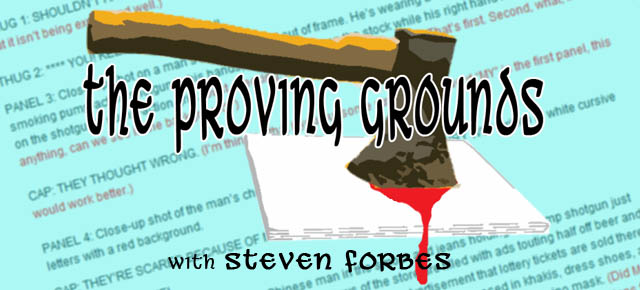



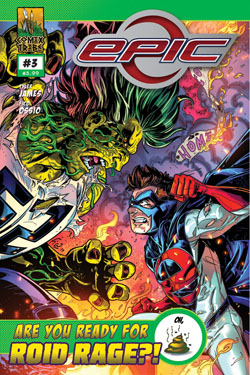

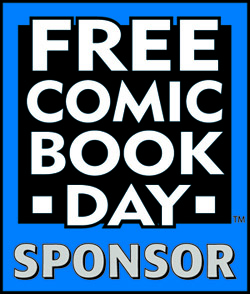


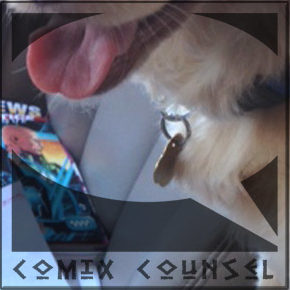
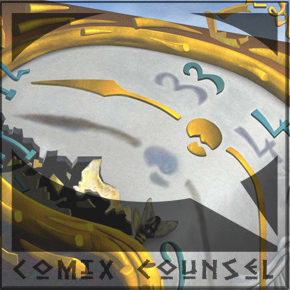
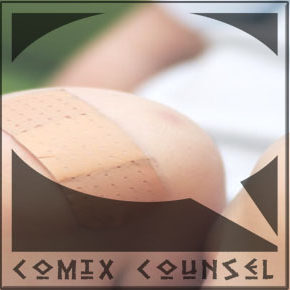
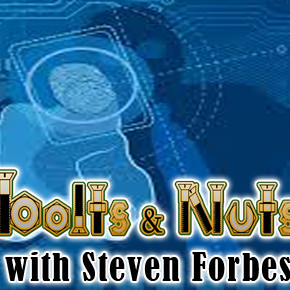
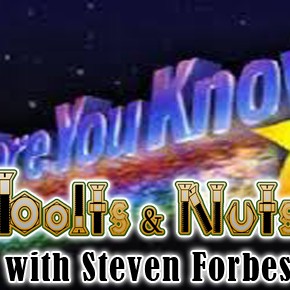



Panel 4: When she wakes, Norden is kneeling beside her.(This is not a panel description. It’s trying to be one, but it isn’t. Rich, can you please turn this into a panel description?)
Sure.
Panel 4
Hart is lying on the ground, with her eyes opened. She looks woozy, holding one hand against her forehead as she comes out of the daze. Norden kneels beside her, patting his backpack.
That’s me sticking to what’s there with Norden’s dialogue. The car exploding would need another panel entirely. I agree he’s being somewhat of an asshole, if I was writing it myself I would probably have him holding her free hand or supporting her prone body in some way.
The difference between my description and the original is that I am not describing what’s happening – I’m describing what I see. Maybe that’s putting too fine a point on it, but as I see it the original description is more about describing what is going on in the narrative (she’s waking up) than instructing the artist how to render what is going on (she’s lying on the ground, eyes open).
“The difference between my description and the original is that I am not describing what’s happening – I’m describing what I see. Maybe that’s putting too fine a point on it, but as I see it the original description is more about describing what is going on in the narrative (she’s waking up) than instructing the artist how to render what is going on (she’s lying on the ground, eyes open).”
That certainly is one of the most succinct and efficient way I’ve ever read anyone write about panel descriptions. Bravo, Rich!
Just to add to what you’re saying here, “describing what’s going on” is eactly the way you write a screenplay. We get a lot of screenwriters on TPG writing their first comic script. I’d tell them: study the medium, study the craft. Find some comic scripts online and study those. There’s a huge difference between describing action sequences (movies) and describing what you see (comics).
Comic scripting is more about telling an artist what to draw in order to tell a story than it is about telling a story yourself.
Thanks, Yannick!
I agree, it’s a very tough stumbling block for screenwriters looking to make the jump. It’s easy to think there’s not much of a difference – I mean, they make storyboards from screenplays, right? But comics are a unique and distinct medium. It pays to learn the rules.
One of the best things to do is check out scripts from established writers – I learned a lot by doing that. One of my favorites is the script to the first issue of The Other Side by Jason Aaron – lots of detail in his descriptions (maybe more than I would do, personally), and just a great script.
http://www.comicbookscriptarchive.com/goods/jasonaaron/THEOTHERSIDE_1.doc
Also, as the name implies, comicbookscriptarchive.com has lots and lots of reading material available 🙂
I read that Aaron script! That website is a GOLDMINE for aspiring comic writers. You get to see what the business really looks like.
Okay sure, there are a couple of Warren Ellis scripts that shouldn’t be seen as the norm, but I still think anyone who wants to write comics should have a look anyway.
And I still thibk your new Twitter pic is creepy. 😛
So Steve got pretty confused there by the end (or he was being intentionally obtuse to hammer home the point of why not to do what you did). I read through a couple times, and let me try to explain what you did and why you don’t do it.
You included SCENE descriptions in addition to panel descriptions. You would include something that says “okay, here is what these next few panels are describing narratively”, and its completely unnecessary at best and confusing at worst. Stuff like: “Norden rushing back to the dig site desperately seeking evidence.” You’re writing this for A) your artist and B) your letterer. These people need only to know what to draw/write. Narrative is your job. You need to make sure that narrative is conveyed in what you tell them explicitly to write/draw, not in descriptions that nobody else will see.
So, what you do instead, is move those scene descriptions into panel descriptions. Use one set of more detailed descriptions instead of two sets of less detailed descriptions. And focus specifically on what is seen – where the characters are, what they are doing, and what expressions are on their face. Instead of “he really wants those artifacts”, say “he has a look of determination on his face.”
There is one level above a panel description that you can sometimes use – and that is the PAGE description. This is not used to describe what is going on in any of the panels, but how the panels are laid out. I thought you were doing this on page 3, but then you only described 3 of the 6 panels. Here’s what you could have done:
Page 3 (6 Panels)
Three page-wide panels, all the same height taking up the top half of the page. Then two square panels, and finally one more page-wide panel.
See how I described the page itself, but didn’t say a thing about content? Content goes in panel descriptions.
Also, unless you have something very specific you want in terms of layout, I will typically leave these out. Your artist will typically thumbnail a couple layouts and decide which looks the best artistically, and by being specific, you are really hamstringing the artist. Give them room to do their job. Unless you’ve got something crazy specific in mind with, say, inset panels, panels at strange angles, panels bleeding into each other, or some sort of forced symmetry, something like that, your artist can probably lay out your panels.
Here’s one more thing that Steve touched on, but I want to be clear on:
Do NOT do a flashback when you are already in a flashback. Period. You get one level of flashback.
That’s a RULE. And like any rules, once you get some skill under your belt you can break it, sometimes to great effect, but only if you can explain in detail why its a rule, why you’re breaking it, and what breaking it will achieve.
Deadpool has done multiple levels of flashbacks, and one of his personalities broke the fourth wall and lampshaded it. Brilliant. Watchmen has timelines all over the place, but its so well done it just works.
So if you have a dang good reason and you know you can pull it off, sure. Otherwise NO.
Now that my cautionary tale has been told, I want to thank Steven for taking the time out to read my script. Yes, for the record, I know what a hellride is and I believe my script qualified.
This was not the script I submitted. But the similarities are sufficient that the end result would be the same. I did go and check on formatting conventions and used more formal structures. I also took a look at all of the finalists scripts and the winning scripts for examples of what was considered successful.
I want you to know Steven, I did not enter this contest lightly. I actually did not hear about it until a week before the final deadline so even though many extensions had already been given, I hadn’t been privy. If I had, I would have done greater research so that this experience would not have had to be so fraught with Zelazynian dimension-shifting peril.
When I deconstruct what you have written here and digest the other scripts from the contest, I may try again. Thank you and your cohort for their efforts.
Thaddeus Howze
You’re welcome, Thaddeus.
But still, with even a week, I personally wouldn’t have entered a contest in a format that was alien to me. Not as my first rodeo.
Learning on your own, unless you’ve got really good examples in front of you, it takes about a year or two before reaching anything considered to be a comfort level to write a script. And that’s if you’re writing every day within the format. You can cut the time down by getting an editor, but that learning curve is still there.
So, from my point of view, yes, you entered the contest lightly. We can agree to disagree. No worries.
Again, comic scripting is a highly stylized form of writing. Learning to think in still images is not something that is easy. We’re used to motion. That’s how we think. Books, television, movies, and yes, even radio, all bear this out. Comics has to give the illusion of motion within a still image. That is a trick all comic book writers must learn.
Am I trying to dissuade you from writing comics? Not at all. I hope you continue to write them and continue to grow within the medium. I hope you stick around. The entire premise for the site is creators helping creators make better comics. You just need to put in more time and effort, just as with everything else in life.
Thanks for submitting, and again, I hope you stick around. We Zelazny lovers need to stick together.
“THE SEEKERS – Page Two (8 Panels)
Change scene: Norden rushing back to the dig site desperately seeking evidence.
Panel One:Interior of a car, light from the dash illuminating Norden’s face, glowering, inset the dash speedometer at 95 mph. (No. Yannick? Why am I saying this?)”
Because we just switched scenes on a page turn with no transition and no establishing shot. We go from Freya in the hotel lobby with cops outside ready to shoot her and the detective getting his Sam Spade on to some guy driving in his car.
Best scenario, the reader will think it’s an error that occured at the printer: the pages of the comic he was reading somewhat got mixed up with another comic. Worst and more likely scenario: he’ll assume the voice-over on top of page 2 is the continuation of detective Eckhard’s inner monologue, making him wonder even more who Norden is and how does he relate to the situation at the hotel.
In any case, you need to establish your new scene before drawing us closer to the action, the same way a waiter in a restaurant wouldn’t slam your face down into your potato soup while calmly announcing “Potage crécy, sir.” He presents the dish, sets it down before you and then lets you savor it.
Now to set a good transition, you need to have something stretch over from your last scene into this one. The best transition devices are ones that confer meaning to both scenes. For example, Spider-Man is fighting Doc Ock and he’s quipping:
SPIDER-MAN: I can do this all day, Doc.
The next panel is a wide shot of Mary Jane sitting in a restaurant in front of an empty chair with her arms crossed and an annoyed look on her face.
CAPTION: “It’s not like I have anything else to do.”
Notice two things. First the next scene starts with a wide shot to properly establish that we’re now somewhere else and that this setting has nothing to do with the battle we just left. Second, the quotation marks in the caption set that dialogue as off panel, the expectation of the reader being that this is spoken by the same character that was last seen speaking.
Of course, not all scene changes need to have a transition of this type. However, when you’re switching locales so abruptly as you did – in the middle of a tense showdown – and you start your new scene with a voice-over caption, it helps to have one set properly.
Now how can we address the issue at hand? Here’s my suggestion:
Page 2
Panel 1
Wide elevated shot of the desert outside Las Vegas (reference pic). We can see the city lights in the distance. It’s night still but the moon is full so the whole scene scene is bathed in bluish light. A car is speeding along an unpaved path from left to right, lifting a great dust cloud behind it.
CAPTION (ECKARD): “Weird things tend to happen here once in a blue moon.”
Panel 2
Medium shot of Norden from the passenger seat of the car. He’s holding the wheel with his left hand and lighting a cigarette with the other. The flame from the lighter is illuminating his annoyed features.
NORDEN: Why of course I won’t leave town, Detective.
Panel 3
Norden’s POV shot of the police barricades in the glare of his headlights. We can see part of the dash and his hand on the wheel.*
NORDEN: Of course, I’ll stay out of trouble.
*(No need for the inset of the speedometer now that we’ve shown the car itself tearing across the desert.)
And so on…
I’ll stop here because I’m starting to run into pacing issues with your panel and page count and that’s beside the present point. You get the idea.
You got half of it, Yannick. Now, for the second half.
Space.
The only feasible way to show the interior of the car without having the camera right up in Norden’s face is to puttee camera in the passenger’s seat. This would show Norden in profile, and would be pretty boring.
Remember to consider what space objects contain, folks. Lately, we’ve had a couple of train scenes, and now a car. Remember that you can only put the camera in so many places when your location is ‘inside’.
Let’s think about your car. You’re sitting in the driver’s seat. You put the camera where in order to get a head on view? It goes on the dashboard. Fine. Now, because of the space, you would be showing an extreme closeup. That doesn’t work for your purposes.
When you’re writing things for a car, look to the movies. Very often, the camera will be on the outside if the car, looking in. If you want to focus on the driver and NOT see them in profile, the camera will be on the hood.
Look to the movies when thinking of camera angles inside cars. Be mindful of your space constraints when writing panel descriptions.
Other than that, very nice work, Yannick. (Although there isn’t that much to worry about with the caption on this page. Just color it differently from the internal monologue, and you’re done. No fuss, no muss.)
Ack! Foiled by a car interior! Thanks for the info, Steven.
I actually have a car chase scene coming up in my script for TPG on November 4th. I wonder if I got it right. Oh wait, never mind: it’s in the last pages. You won’t be going that far.